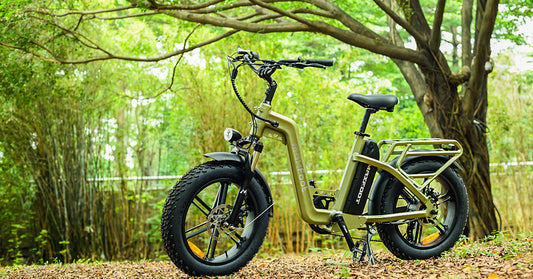In the rapidly evolving landscape of the American electric bike market, the placement of motors on e-bikes has become a key consideration for riders. This discussion centers on the three primary motor placements in electric bicycles, focusing on 'complete electric bicycles' rather than conversion kits.
It is crucial to note that there is no definitive 'best' type of motor; instead, each motor type aligns with different bike types and riding styles.
Front Hub Motor - The Pragmatic Choice
The front hub motor represents a straightforward implementation in the realm of electric bikes. Housed within the hub of the front wheel, it propels the bike by turning the wheel.
Advantages:
- Simplicity: Low maintenance as it distributes strain between the front wheel (motor power) and rear wheel (human power and rider weight).
- Serviceability: Physically separates the motor system from other bicycle components, facilitating easier servicing.
- Versatility: Allows various gearing options in the rear wheel, such as internal hub gears, and maintains a well-balanced and stable bike regardless of battery placement.
Disadvantages:
- Weight Increase: Adds weight to the front end of the bicycle, limiting front fork choices and making curb lifting slightly more challenging.
- Traction Issues: Traction may be a concern on steep tracks with loose surfaces.
- Power Limitations: Becomes unviable above a certain power level.
Best Suited for: City riders and commercial/fleet use where low maintenance and simplicity are crucial. Less suitable for mountain bikers due to traction challenges on loose surfaces.
Rear Hub Motor - The Enjoyable Option
In reality, the distinction between a front hub and rear hub motor electric bicycle is minimal. Both offer similar performance, design constraints, and efficiency in propelling the bicycle without a drive chain.
Advantages:
-
Light and Maneuverable: Results in a light and maneuverable front end, allowing for various front fork options.
-
Maximum Traction: Places all weight on the motor, ensuring maximum traction even in adverse conditions.
-
Aesthetic Advantage: Conceals the motor among gears and pannier bags, reducing visual impact.
-
Lower Noise Levels: Typically exhibits lower noise levels compared to a front hub motor.
Disadvantages:
- Limited Gearing Options: Restricts the choice of pedaling gears to derailleur gears, excluding internal hub gears.
- Maintenance Challenges: Rear wheel and spokes endure significant stress, leading to more frequent maintenance, particularly in electric bikes with rear hub motors.
Best Suited for: Riders frequently traversing off-road steep/loose tracks, as well as city riders prioritizing ride feel over maintenance concerns.
Mid-Drive Motors - The Versatile Option
Mid-drive motor systems, exemplified by offerings from Bosch and Shimano, have gained prominence in the US market. Unlike hub motors, mid-drive motors pull on the chain, leveraging the bicycle's gears.
Advantages:
- Wheel Options: Allows for 'normal' bicycle wheels, offering various options like quick release and internal hub gears.
- Lightweight Design: Keeps both front and rear ends of the bike light, with a lower center of gravity.
- Efficient Traction: Provides traction without concerns, as the drive is via the rear wheel.
- Geared Motor: Allows for efficient uphill climbs at slow speeds.
Disadvantages:
- Complexity: A more complex system leads to higher costs and increased potential failure modes.
- Increased Stress on Drive-Chain: Requires more frequent maintenance of the chain, gears, and rear hub due to combined human and motor power stress.
Best Suited for: Expert mountain biking due to its superior rear wheel traction, lightweight design, and compatibility with various suspension options. Also suitable for electric bicycle touring with a good compromise between drive traction and maintenance.
In conclusion, the choice between these motor placements depends on individual preferences and riding conditions. It is advisable to test ride bikes and carefully consider specific needs before making a selection.




